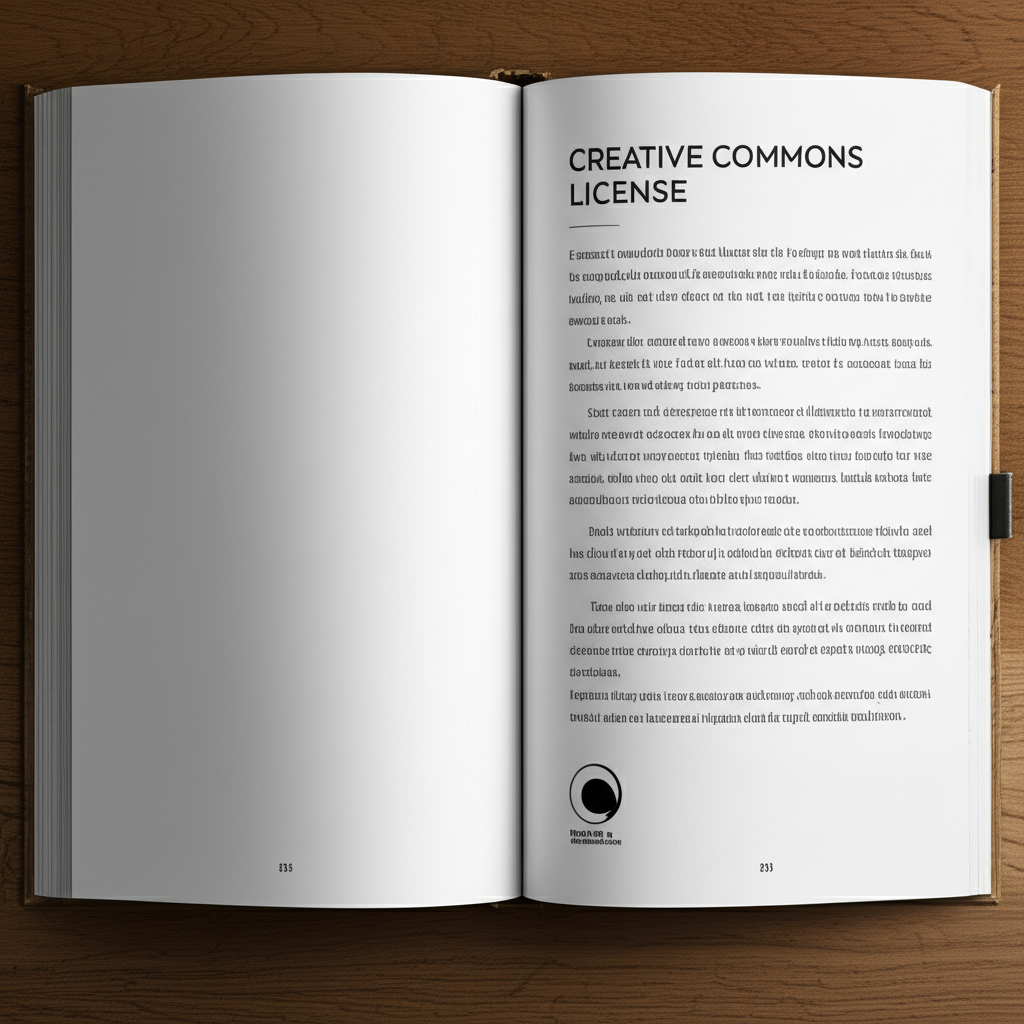Understanding Creative Commons in 2025

The Evolution of Creative Commons
Since its inception in 2001, Creative Commons (CC) has revolutionized how creators share their work in the digital age. By 2025, the Creative Commons licensing framework has evolved significantly to address new technologies, creative mediums, and global challenges. This article explores the current state of Creative Commons licensing and how it continues to shape our digital commons.
New License Types in 2025
The Creative Commons licensing suite has expanded beyond its original six licenses to address emerging needs in the digital ecosystem. Here are the key developments:
1. CC Algorithmic (CC-ALG)
Introduced in late 2023, the CC Algorithmic license specifically addresses AI-generated content and training data. This license allows creators to specify how their work can be used in machine learning training sets while maintaining certain rights over derivative AI outputs.
Key provisions include:
- Explicit permission for algorithmic training
- Requirements for attribution in AI-generated derivatives
- Options for commercial/non-commercial AI applications
- Transparency requirements for AI systems using the licensed content
2. CC Temporal (CC-TEMP)
The CC Temporal license introduces time-based permissions that automatically adjust over specified periods. This innovation allows creators to gradually release their work into the public domain or modify permissions as the work ages.
For example, a creator might specify:
- Years 1-2: All rights reserved except for non-commercial sharing
- Years 3-5: CC BY-NC-SA (Attribution, Non-Commercial, Share-Alike)
- Years 6-10: CC BY (Attribution only)
- After 10 years: CC0 (Public Domain)
This graduated approach has proven particularly valuable for academic research, creative works, and technological innovations where commercial exclusivity may be important initially but less so over time.
3. CC Federated (CC-FED)
Responding to the growth of decentralized networks and federated systems, the CC-FED license addresses content sharing across distributed platforms. It includes provisions for:
- Cross-instance sharing permissions
- Protocol-specific distribution rights
- Instance-level attribution requirements
- Decentralized verification mechanisms
Industry-Specific Applications
Scientific Research and Open Access
By 2025, over 70% of publicly funded research globally is published under some form of Creative Commons license. The scientific community has embraced CC licenses with specific adaptations:
- CC BY-DATA: Specifically designed for research datasets, this license variant requires attribution while addressing database rights and ensuring reproducibility.
- CC RESEARCH: A specialized license that permits academic and research use while restricting commercial applications without additional permissions.
Major funding bodies now require CC licensing for research outputs, with the European Research Council and U.S. National Science Foundation mandating CC BY or CC BY-SA for all funded work.
Educational Resources
The Open Educational Resources (OER) movement has flourished under Creative Commons licensing. In 2025, notable developments include:
- National OER repositories in over 50 countries, all using CC licenses to ensure materials can be freely adapted and shared
- Interactive and adaptive learning materials with embedded CC licenses that persist through algorithmic modifications
- Cross-border educational collaborations facilitated by compatible CC licensing frameworks
Creative Industries
The creative sector has seen some of the most innovative applications of CC licensing:
- Music: The CC+ Music License allows musicians to offer free non-commercial sharing while automating commercial licensing through integrated smart contracts.
- Visual Arts: NFT-compatible CC licenses now bridge the gap between blockchain-based ownership and traditional copyright frameworks.
- Film and Video: Tiered CC licensing enables creators to release different elements of their work under varying permissions (e.g., footage under CC BY, final cut under traditional copyright).
Global Adoption and Legal Recognition
Creative Commons licenses have gained stronger legal recognition worldwide. Key developments include:
- Formal recognition of CC licenses in copyright legislation in over 30 countries, providing clearer legal standing in disputes
- International treaty provisions acknowledging CC licensing as a valid expression of creator rights
- Standardized interpretation guidelines issued by courts in the EU, US, and several Asian jurisdictions
- Integration with automated copyright management systems used by major platforms and content registries
Challenges and Controversies
Despite its success, Creative Commons licensing faces several challenges in 2025:
AI and Authorship Questions
The rise of generative AI has created complex questions about attribution and derivative works. When an AI system trained on CC-licensed content creates new works, determining the appropriate licensing and attribution requirements remains contentious.
License Compatibility Issues
As the number of license variants grows, compatibility problems have emerged. Works licensed under different CC licenses cannot always be combined legally, creating "license silos" that fragment the digital commons.
Enforcement Challenges
While CC licenses are legally binding, enforcement remains difficult, especially across jurisdictions. The Creative Commons organization has established an enforcement fund to support strategic litigation, but resources remain limited compared to traditional copyright enforcement mechanisms.
The Future of Creative Commons
Looking ahead, several developments are likely to shape the evolution of Creative Commons licensing:
- Machine-Readable Licensing: Enhanced metadata standards will make CC licenses fully machine-readable and automatically enforceable across platforms.
- Blockchain Integration: Distributed ledger technologies will provide immutable records of licensing terms and attribution requirements.
- Automated Compliance Tools: AI-powered systems will help creators monitor use of their CC-licensed works and ensure compliance with attribution and other requirements.
- License Simplification: Efforts are underway to address license proliferation through a new, simplified framework that maintains flexibility while reducing compatibility issues.
Conclusion
In 2025, Creative Commons licensing continues to play a vital role in balancing creator rights with the benefits of open sharing. As digital creation and collaboration evolve, CC licenses are adapting to provide flexible, legally robust options for managing intellectual property in the digital commons.
The ongoing innovation in CC licensing reflects a broader shift in how we conceptualize ownership and sharing in the digital age—moving from an all-or-nothing approach to copyright toward nuanced frameworks that empower creators while fostering a vibrant commons of shared knowledge and creativity.
Popular Posts

The Best Cannabis Dispensaries In America
April 12, 2025

The Top Vaporizers You Can Buy
March 5, 2025



